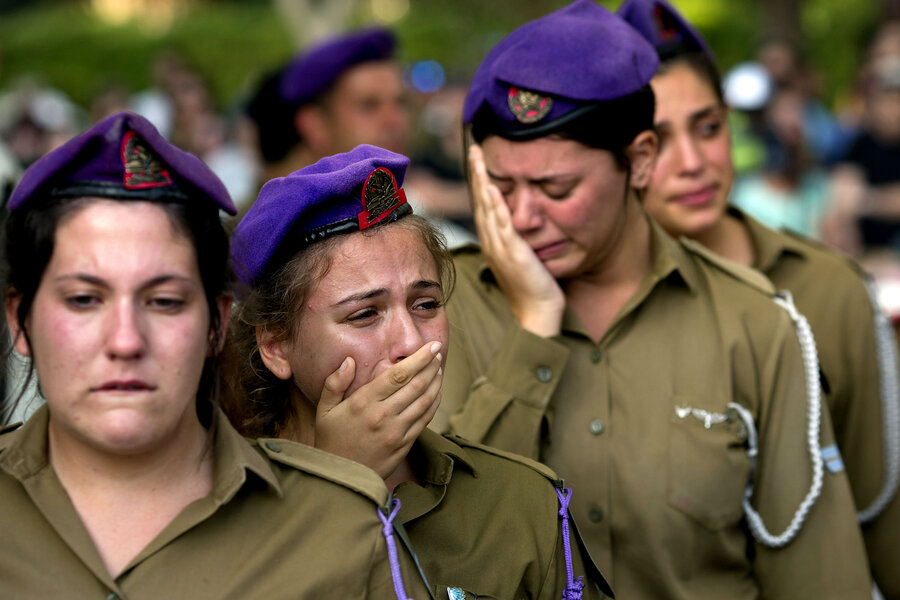Why the path to an Israeli-Hamas cease-fire is harder this time
Loading...
Despite calls from US Secretary of State John Kerry and UN Secretary General Ban Ki-Moon, a ceasefire in the Gaza Strip doesn't appear imminent. Israel today called up 16,000 fresh reservists and Prime Minister Benjamin Netanyahu vowed to continue fighting until all tunnels from Gaza to Israel are destroyed.
Previous truces between Israel and Hamas, the Palestinian militant group, may indicate the terms of a future cease-fire. In 2009 and 2012, hastily-arranged ceasefires followed periods of sharp escalation between the two sides. Since 2012, regional regime changes and increased pressure on Hamas have changed the dynamics in Gaza and may make efforts to reach another truce more difficult.
How did past flareups end?
In the past six years, there have been five rounds of violence between Israel and Hamas. All of the conflicts ended in a truce.
Israel and Hamas last fought in November 2012's "Operation Pillar of Defense." Other confrontations include "Operation Returning Echo," which took place in March 2012; "Operation Cast Lead," which started in December 2008 and ended soon after the new year; and "Operation Hot Winter" in March 2008.
"Cast Lead" led to the most casualties, killing 1,400 Palestinians and 13 Israelis. It erupted as former President George W. Bush prepared to leave office and President Barack Obama readied himself for the job. Neither leader was able to exert much pressure on either Hamas or Israel.
After previous truces were signed, Israel said it would reconsider its economic blockade of the Gaza Strip and Hamas vowed to stop its rocket fire. Neither happened.
Palestinian negotiators said they believed trade in Gaza would pick up and possibly return to pre-2007 levels, before Hamas's takeover of Gaza, and Israel's subsequent blockade. Israel and Egypt, however, never fully opened the borders to commerce. Israel said that more-open borders would allow Hamas to restock its arsenal.
How is this round of conflict different?
Israel is hesitant to end the current "Operation Protective Edge" until it has neutralized Hamas as a military threat. Recent opinion polls indicate that the Israeli public overwhelmingly supports continued war in Gaza in order to achieve long-term "quiet" from rocket fire and tunnel incursions. In line with this thinking, a few Israeli government ministers have considered reoccupying the entire coastal strip.
Israel's casus belli has also shifted. Initially it alleged that Hamas had ordered the kidnapping of three Jewish teenagers, causing Israel to crack down on West Bank-based Hamas members. Then Israel argued that it needed to halt incoming rocket fire. Finally it claimed that the main objective was to demolish tunnels that reach into Israel, leading to an IDF ground incursion.
Destroying the concrete labyrinth of 50-foot-deep burrows might require a much longer operation, discouraging Israel from reaching a truce in the near future.
On the other side, Hamas is wary of halting its fire before achieving any concessions. The Islamist organization is demanding at a minimum that its borders be opened to trade. As the civilian death toll creeps higher, Hamas will need to maintain the support of Palestinians in Gaza, possibly by increasing its demands. And in terms of geopolitical strength, Hamas has weakened. After the overthrow of Egyptian President Mohamed Morsi last year, it lost an important ally in Cairo.
Mr. Morsi proved critical in negotiating the last cease-fire deal in 2012. Under former dictator Hosni Mubarak, Egypt also helped end the 2008-2009 war. But current President Abdah Fattah el-Sisi has largely taken Israel’s side in the conflict and is hoping that Hamas, a long-ago offshoot of Morsi's Muslim Brotherhood, will be dealt a severe blow.
Hamas has now turned to Turkey and Qatar. As The Christian Science Monitor reported:
“The regional constellation is very different from 2012, and in ways that make the diplomacy for getting some kind of cease-fire agreement in this conflict much harder than it was just a couple of years ago,” says Robert Danin, senior fellow for Middle East studies at the Council on Foreign Relations (CFR) in Washington.
And the biggest change, he and other experts say, is with Egypt. “Egypt doesn’t have the relationship with Hamas that it did, and its conception of its interests are very different from 2012,” Mr. Danin says.
Financially, the organization is struggling. After Egypt shut its cross-border tunnels into the Sinai Peninsula — a key source of tax revenue on food, fuel, and weapons — Hamas had to stop paying its employees in Gaza.
It is possible that Israel could eventually exhaust Hamas' rocket arsenal and declare a unilateral ceasefire, as it did in the 2008-2009 fighting. Yet such a task may entail far greater civilian casualties, further inflaming world opinion.
What are both sides’ basic demands?
Hamas wants an end to Israel’s land and maritime blockade, which has strangled the Palestinian economy and made it difficult to import construction supplies and goods. Hamas also wants the Western-supported Palestinian Authority to pay salaries to public employees in Gaza. Finally, it demands the release of Hamas prisoners arrested this June after the kidnapping of three Israeli teenagers.
Israel desires an end to the intermittent rocket fire that plagues its southern border towns, preferably via Gaza's demilitarization. In recent days, Prime Minister Benjamin Netanyahu has prioritized the destruction of Hamas' Gaza-Israel tunnels.
According to +972, a left-leaning Israeli website, Israel would be fine with a return to the status quo ante – relative quiet coupled with a blockade on Gaza. However, Hamas cannot afford to do the same due to severe financial constraints and its lack of substantial diplomatic support.
What are some viable cease-fire options?
Under one plan, Israel could turn to the United Nations and ask the Security Council to pass a resolution calling on Hamas to relinquish control of Gaza to the Palestinian Authority. According to liberal Israeli daily Haaretz, the possible resolution would also allow for PA forces to patrol the border and for UN inspectors to ensure demilitarization. In return, Israel would loosen border crossings and allow for passage between the West Bank and Gaza.
Under another plan, the sides would agree to a humanitarian ceasefire of indeterminate length, during which time they would negotiate a more durable truce. Previous proposals for a humanitarian ceasefire have collapsed after Israel balked at them, claiming that Hamas would use lulls in fighting to reposition its forces.
In a proposal advanced by the US, Israel and Hamas would agree to a cease-fire similar to the one previously put forth by Egypt. After quiet had returned, Israel would negotiate a more-open border for Gaza and back-payment for the territory’s public employees.
Previously, Hamas has offered Israel a ten-year truce – or hudna – based on certain preconditions, the Hebrew Maariv daily reported last week. These include greater freedom of movement for Gazans and the release of Palestinian prisoners.








